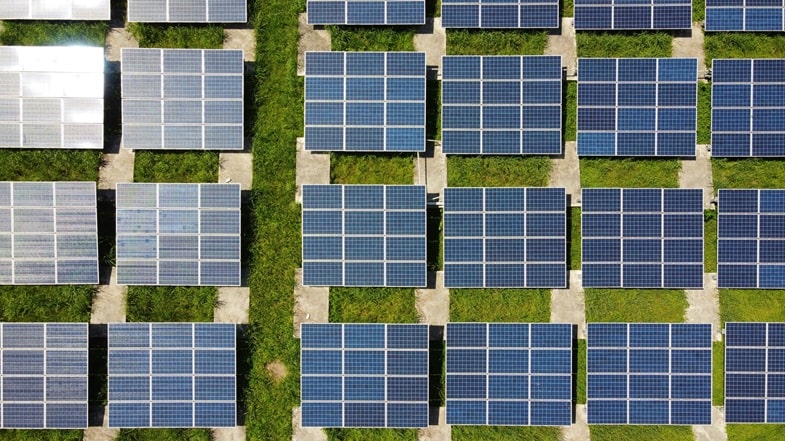Modified on: 22/07/2025
Adapting Cannabis to Environmental Conditions: Keys to Facing Global Climate Change
The success of cannabis seed cultivation largely depends on the ability to adapt agricultural techniques to local climatic conditions. Today, with ongoing climate change, adapting agricultural techniques to local climate conditions has become a more urgent challenge than ever.
In this article, we will explain the importance of understanding and adapting to the climate to achieve healthy and productive cannabis crops.
The Importance of Climate in Cannabis Cultivation
Cannabis is a resilient plant, capable of growing in a variety of conditions. However, to achieve optimal yield, it is essential that the plant grows in an environment suited to its natural needs. The climate influences several aspects of the cannabis growth cycle, such as photosynthesis, water evaporation, nutrient absorption, and the production of cannabis terpenes and cannabinoids.
Each cannabis strain has specific climatic needs, influenced by its genetics. For example, indica varieties tend to prefer cooler, more humid climates, while sativas thrive in warm, sunny climates. However, even within these categories, there are strains that can adapt to diverse conditions, thanks to centuries of hybridization and natural selection.
The ideal climate for cannabis is characterized by temperatures ranging between 20 and 30 degrees Celsius during the day, with a nighttime decrease of about 10 degrees. The plant needs good sunlight exposure, a relative humidity between 40% and 60%, and adequate ventilation to avoid mold and fungal diseases.
Read also: How to keep cannabis seeds at the right temperature?


Climate Change and Its Implications for Cannabis Cultivation
In recent decades, climate change has begun to significantly impact the growing conditions for cannabis in many regions of the world. Rising temperatures, precipitation variation, and the intensification of extreme weather events are forcing growers to review their agricultural practices.
In some areas, rising temperatures can be an advantage, allowing for a longer growing season and more sunlight exposure. However, in other regions, excessive heat can damage the plants, causing water stress and reducing the quality of the final product. The rise in daytime temperatures, in particular, can interfere with the cannabis flowering cycle, compromising flower and resin production.
Variations in precipitation pose another challenge. Cannabis plants require a constant and moderate amount of water to grow healthily, and a shortage or excess of water can have devastating effects. Prolonged droughts can drastically reduce crop yields, while excessive rain can lead to moisture buildup in the soil, promoting mold and other diseases.
Climate Adaptations in Cannabis Cultivation
To address climate challenges, cannabis growers must adopt flexible and innovative strategies. Some of these adaptations include using greenhouses, selecting resistant varieties, and optimizing irrigation and ventilation systems. Let’s take a closer look at some of the most effective solutions.
- Greenhouse Use: greenhouses allow growers to control the growing environment more precisely than outdoor cultivation. By using a greenhouse, it’s possible to regulate temperature, humidity, and ventilation according to the plant’s needs. This helps protect crops from extreme weather events like heavy rains, hail, or heatwaves. Modern greenhouses can also be equipped with automated control systems that continuously monitor environmental conditions and make real-time adjustments.
- Selecting Suitable Varieties: another important adaptation involves choosing cannabis varieties best suited to local climate conditions. Autoflowering varieties, for example, are especially suited to cold climates or short summers, as they flower regardless of sunlight duration. Drought-resistant varieties, on the other hand, can be successfully grown in arid regions, reducing the need for irrigation. Some growers are also experimenting with hybridizing varieties to create plants that better adapt to new climatic conditions.
- Efficient Irrigation Systems: in the context of climate change, it is essential to optimize water use. Drip or micro-irrigation systems can reduce water waste and ensure that plants receive the appropriate amount of moisture. Additionally, using mulch and soil water conservation techniques can help keep the soil moist even during drought periods.
- Ventilation and Humidity Control: in areas with high humidity, ventilation becomes a crucial factor in preventing mold and fungus formation. Growers can use fans and air extraction systems to maintain constant airflow and reduce moisture buildup. It’s also important to manage plant density: overly dense crops tend to retain moisture, increasing the risk of fungal diseases.


The Role of Sustainable Practices
In addition to climate adaptation, it’s essential to consider the importance of sustainability in cannabis cultivation. The adoption of sustainable agricultural practices not only helps reduce environmental impact but can also improve crop resilience in the face of changing climate conditions. Below are some sustainable practices used by cannabis growers.
- Regenerative Agriculture: this approach focuses on restoring and improving soil health through techniques such as crop rotation, the use of organic fertilizers, and planting cover crops. Healthy soil is more resistant to environmental stress and requires fewer external inputs, such as fertilizers and pesticides. Regenerative agriculture not only improves the quality of the final product but also contributes to carbon capture, reducing the impact of climate change.
- Reducing Pesticide Use: excessive use of chemical pesticides not only harms the environment but can also negatively impact the quality of cannabis. Growers are increasingly adopting biological control methods to manage pests and diseases, using beneficial insects, traps, and natural treatments. This approach is not only safer for the environment but can also reduce production costs in the long term.
- Energy Savings in Indoor Cultivation: for indoor growers, energy consumption is a major concern in terms of sustainability. Lighting, heating, and ventilation systems require large amounts of energy. Adopting high-efficiency LED lights and using renewable energy sources can significantly reduce the environmental impact of indoor crops without compromising plant quality or yield.
Read also: The 5 essential nutrients for cannabis cultivation
Conclusion
Cannabis cultivation is closely tied to climate, and with the advancement of climate change, growers must adapt to increasingly unpredictable environmental conditions. Through the adoption of innovative and sustainable agricultural techniques, it is possible to mitigate the negative effects of climate change and ensure healthy, productive crops.
Using greenhouses, selecting resistant varieties, optimizing irrigation, and managing humidity are just a few of the available solutions. In a future where climate challenges will become increasingly pressing, the ability to adapt and innovate will be essential to ensuring the success of cannabis cultivation. Discover more at Sensoryseeds!









